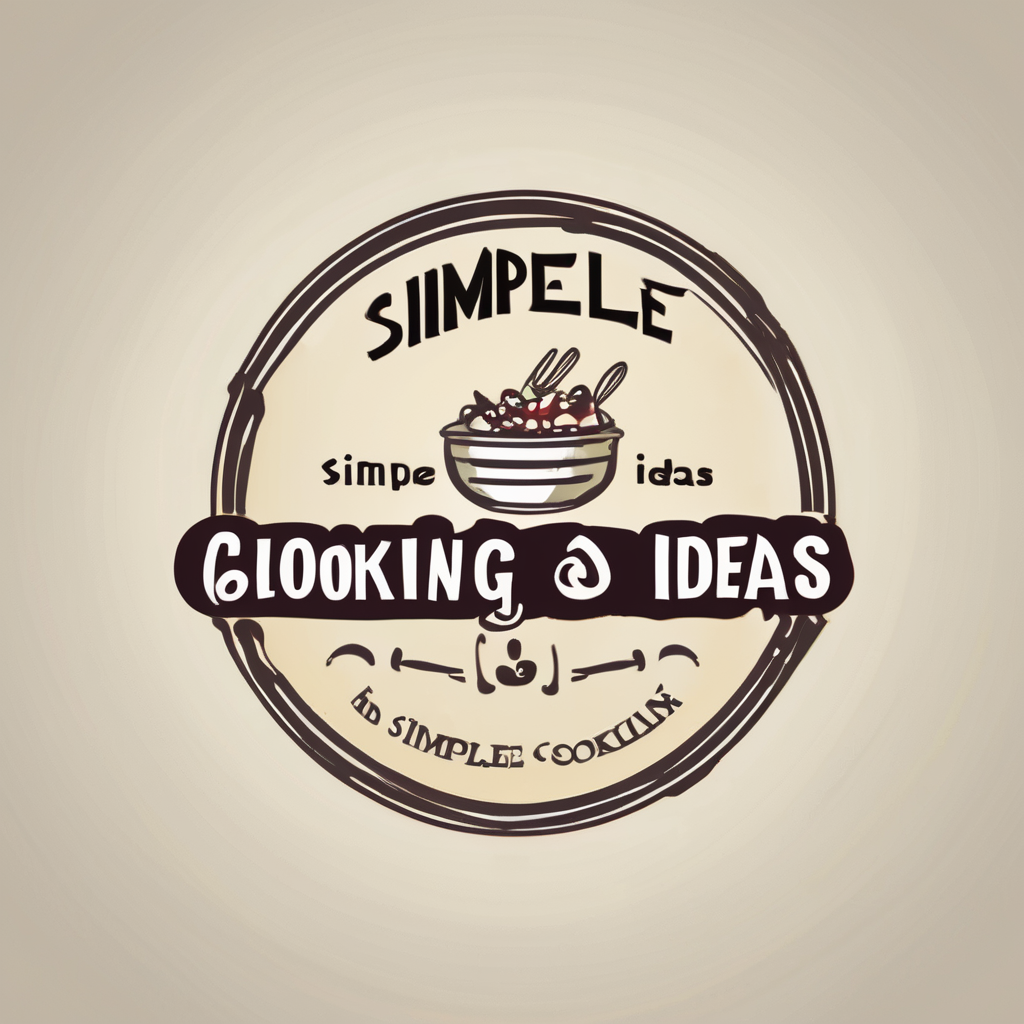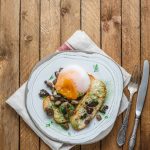Crafting a Stunning Visual Nutritional Display for Your Kitchen: A Step-by-Step Guide
Understanding the Importance of Visual Nutrition Displays
When it comes to cooking and meal planning, presenting nutritional information in a clear and visually appealing way can make a significant difference in the dining experience. Whether you are a home cook, a professional chef, or the owner of a restaurant, creating a stunning visual nutritional display can help your customers make informed choices about their food.
"Visual presentation is crucial because it sets the tone for the entire dining experience," says Sadie Lake, a designer who has worked on numerous kitchen renovation projects. "When nutritional information is presented in an attractive and easy-to-follow manner, it enhances the overall appeal of the dish and makes the customer more likely to engage with the menu."
Have you seen this : Transform your eating habits: how transparent fridge doors influence healthy choices at home
Planning Your Visual Nutritional Display
Before you start creating your visual nutritional display, it's essential to plan out what you want to achieve. Here are some steps to help you get started:
Define Your Objectives
- Determine what nutritional information you want to display. This could include calorie counts, macronutrient breakdowns, and details about dietary restrictions.
- Consider your target audience. Are you catering to health-conscious individuals, families with children, or customers with specific dietary needs?
Choose Your Tools and Resources
- Use website templates or design tools that are optimized for nutrition-focused content. For example, Mobirise offers templates that include features for tracking daily calorie intake and monitoring nutritional content.
- Invest in high-quality food photography and cooking videos to make your dishes look appealing.
Organize Your Content
- Create a menu that is easy to follow and includes clear nutritional information for each dish.
- Use tables or infographics to present nutritional data in a visually appealing way.
Designing Your Visual Display
Selecting the Right Layout
- A functional layout is key to a successful visual display. Consider a U-layout for your kitchen, similar to the one designed by Sadie Lake, which includes different zones for cooking, baking, and cleanup.
- Ensure that your layout is practical and rugged, especially if you have a busy kitchen.
Using High-Quality Visuals
- High-quality food photography can make your dishes look irresistible. Use good lighting and styling to make your food stand out.
- Incorporate cooking videos to show the preparation process and make the recipes more engaging.
Incorporating Nutritional Information
- Use clear and concise language when presenting nutritional information. Make sure it is easy to read and understand.
- Include detailed nutritional facts for each recipe, such as calorie counts, protein, fat, and carbohydrate content.
Creating Engaging Nutritional Content
Developing Recipes and Menu Items
- Create recipes that are not only delicious but also nutritious. Consider using fresh ingredients and balanced meal planning.
- Ensure that your menu items cater to various dietary restrictions, such as gluten-free, vegan, or low-carb options.
Using Interactive Tools
- Utilize interactive tools like meal planners and recipe makers to help customers create personalized meal plans based on their dietary goals and preferences.
- Include features that allow customers to adjust serving sizes and ingredients to fit their individual needs.
Engaging with Your Customers
- Create a community of health enthusiasts where customers can share tips, ask questions, and get support.
- Use informative articles and guides from nutrition experts to educate and inspire your customers.
Practical Tips for Implementation
Make It Easy to Follow
- Ensure that your visual display is easy to follow and understand. Use clear headings and concise descriptions.
- Provide step-by-step instructions for each recipe to make cooking easier for your customers.
Ensure High Quality
- Use high-quality images and videos to showcase your dishes. This will make your food look appealing and increase customer engagement.
- Regularly update your content to keep it fresh and relevant.
Consider Dietary Restrictions
- Make sure to include options for customers with dietary restrictions. This can include gluten-free, vegan, or low-carb recipes.
- Clearly label each dish with relevant nutritional information to help customers make informed choices.
Example of a Well-Designed Visual Nutritional Display
Here is an example of how you can create a stunning visual nutritional display for your kitchen:
In the same genre : Transform your eating habits: how transparent fridge doors influence healthy choices at home
Visual Menu Board
| Dish | Calories | Protein | Fat | Carbohydrates | Dietary Restrictions |
|---|---|---|---|---|---|
| Grilled Chicken Salad | 350 | 30g | 15g | 20g | Gluten-free, Low-carb |
| Vegan Quinoa Bowl | 400 | 20g | 10g | 60g | Vegan, Gluten-free |
| Baked Salmon | 250 | 35g | 10g | 0g | Low-carb, Gluten-free |
Cooking Video Example
- Create a cooking video that shows the preparation of each dish. For example, a video for the Grilled Chicken Salad could include steps on how to grill the chicken, prepare the salad, and assemble the dish.
Interactive Meal Planning
- Use an interactive meal planner to help customers create personalized meal plans. For instance, a customer could input their dietary goals and preferences, and the tool would suggest recipes and meal plans accordingly.
Quotes and Insights from Experts
- "When designing a kitchen, it's crucial to think about how the space will be used. A well-designed kitchen should be both functional and visually appealing," says Sadie Lake.
- "Using high-quality visuals and interactive tools can significantly enhance the dining experience. It makes the customer feel more engaged and informed about their food choices," notes a nutrition expert.
Creating a stunning visual nutritional display for your kitchen is a multifaceted process that involves careful planning, design, and implementation. By following these steps and using the right tools and resources, you can ensure that your customers have a positive and informative dining experience.
Remember, the key is to make the information easy to follow, high quality, and relevant to your customers' needs. Whether you are a home cook or a professional chef, a well-designed visual nutritional display can make a significant difference in how your food is perceived and enjoyed.
Additional Tips and Resources
Detailed Bullet Point List for Creating a Visual Nutritional Display
- Define Objectives: Determine what nutritional information to display and who your target audience is.
- Choose Tools and Resources: Use nutrition-focused website templates and invest in high-quality food photography and cooking videos.
- Organize Content: Create a menu with clear nutritional information and use tables or infographics to present data.
- Select Layout: Opt for a functional layout that includes different zones for cooking and cleanup.
- Use High-Quality Visuals: Incorporate good lighting and styling in food photography and use cooking videos to show preparation.
- Incorporate Nutritional Information: Use clear language and include detailed nutritional facts for each recipe.
- Develop Recipes and Menu Items: Create nutritious recipes that cater to various dietary restrictions.
- Use Interactive Tools: Utilize meal planners and recipe makers to help customers create personalized meal plans.
- Engage with Customers: Create a community for health enthusiasts and use informative articles and guides from nutrition experts.
- Make It Easy to Follow: Ensure that your visual display is easy to follow and understand.
- Ensure High Quality: Use high-quality images and videos and regularly update your content.
- Consider Dietary Restrictions: Include options for customers with dietary restrictions and clearly label each dish.
Comprehensive Table for Nutritional Information
| Nutrient | Description | Importance |
|---|---|---|
| Calories | Measure of energy content | Essential for weight management |
| Protein | Building block for muscles | Crucial for muscle growth and repair |
| Fat | Source of energy and essential fatty acids | Important for brain function and hormone production |
| Carbohydrates | Primary source of energy | Vital for brain function and physical activity |
| Fiber | Aids in digestion and satiety | Helps in maintaining healthy blood sugar levels and bowel health |
| Vitamins | Essential for various bodily functions | Crucial for immune function, energy production, and overall health |
| Minerals | Necessary for various bodily functions | Important for bone health, muscle function, and nerve function |
By following these guidelines and using the provided resources, you can create a stunning visual nutritional display that not only looks great but also provides valuable information to your customers.






